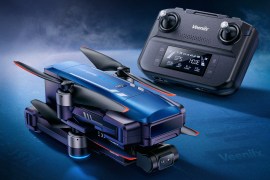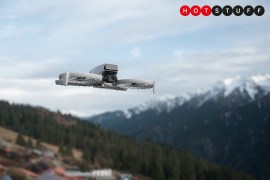DJI Air 3S review: I wish this ace flyer wasn’t hamstrung by UK regulations
This fantastic camera drone deserves to be flown – but legal restrictions make things tricky
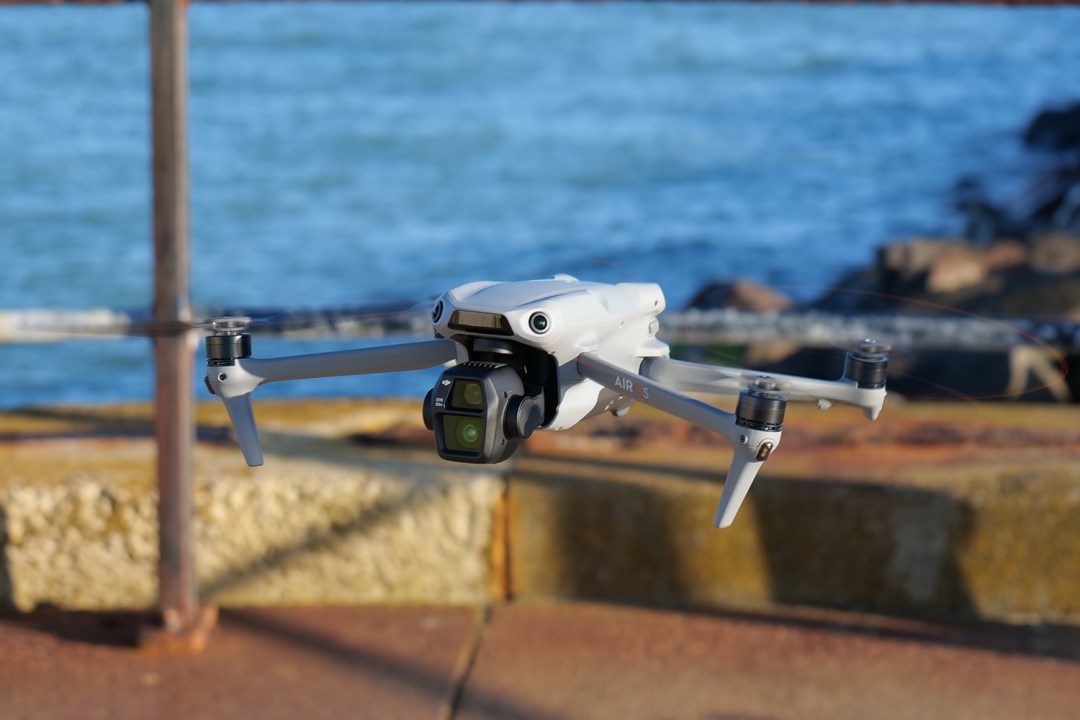
Stuff Verdict
Not a great choice for UK residents due to its weight, and probably not worth swapping your Air 3 for – but the Air 3S is yet another fantastic, great value camera drone from DJI.
Pros
- Excellent dual-camera setup
- Great safety features
- Good battery life
Cons
- 724g weight means severe UK flight restrictions
- Non-adjustable apertures on both cameras
Introduction
Flying in to supplant 2023’s Air 3 as DJI’s mid-range camera drone flagship, the Air 3S is aimed at aerial imaging enthusiasts looking for a bit more video and photo power than the ultra-lightweight DJI Mini series can provide, but unwilling to spend big money on one of DJI’s top-of-the-line Mavic drones.
Like the Air 3 before it, the Air 3S comes with a dual-camera setup, pairing a ‘standard’ wide-angle camera with a specialist medium telephoto camera. It also ushers in a number of improvements, not only on the image quality front but for flight safety capabilities and on-board storage too.
With launch prices starting at US$1099/£959, the DJI Air 3S looks like a lot of drone for the money. I spent a week flying it to find out if it’s the perfect mid-range camera drone, or a worthy upgrade for current owners of a Mini or Air model.
How we test drones
Every drone reviewed on Stuff is tested in a range of lighting and wind conditions where possible, with a variety of subjects and scenes. We use our years of experience to compare with rivals and assess ergonomics, features and general usability. Manufacturers have no visibility on reviews before they appear online, and we never accept payment to feature products.
Find out more about how we test and rate products.
Design & build: weight limits


There’s an elephant in the room when it comes to the DJI Air 3S, and it’s its weight. Not that it feels in any way like a large, heavy drone, you understand: it folds up to a pleasantly portable size and, at 724g, can be tossed into a smallish bag if you want to take it out for the day.
The problem with its weight is that, at over 250g, it’s in a class of drone that it’s legally tricky to fly anywhere you might want to actually fly a drone, at least in the UK. The Civil Aviation Authority’s rules on drones are an overly complex, overly restrictive mess, in my opinion, but put simply, you’re fine flying a sub-250g drone almost anywhere (provided you register as an operator, get a flyer ID and pass a simple, free online test concerning the rules).
Once your drone gets any heavier, the flight restrictions kick in: you must stay horizontally 50m away from uninvolved people, never fly above anyone and stay 150m away (again, horizontally) from residential, recreational, commercial and industrial sites. This isn’t only built-up areas but includes places like parks and beaches, so you can see how it would limit legal flight in pretty much any town, city or even village in the UK.
If a drone owner undertakes and passes the A2 Certificate of Competency (CofC), which requires spending around £100 to take a course and sit an invigilated online exam, they can fly the Air 3S in what’s called the A2 subcategory of the open category, meaning the 150m rule is removed – but they must still remain at least 50m away from people, or place where people may appear. Be aware that this applies to recreational flight only; if you want to make any money from your Air 3S footage or photos you’ll need to jump through a bunch of other, more expensive hoops.
So, the Air 3S is really one for drone enthusiasts only. Casual users who want to fly it often and with minimal fuss or risk of law-breaking should opt for an ultralight drone like the DJI Mini 4 Pro or the recently released DJI Neo.
With that out of the way, I’ll say that the Air 3S is designed and built to the usual high DJI standards. The only parts of the drone that feel slightly delicate are the propellers, and the camera and its gimbal; the latter bits can be protected by a hard plastic cover when not in use. I reviewed the Fly More Combo bundle that also included extra batteries, a battery charging hub, ND filter set, RC 2 touchscreen controller and a high-quality shoulder bag to put everything in and, while this obviously bumps up the price quite a bit, it does make keeping all the elements together and in good condition a lot easier.
Flight performance and features: safety first
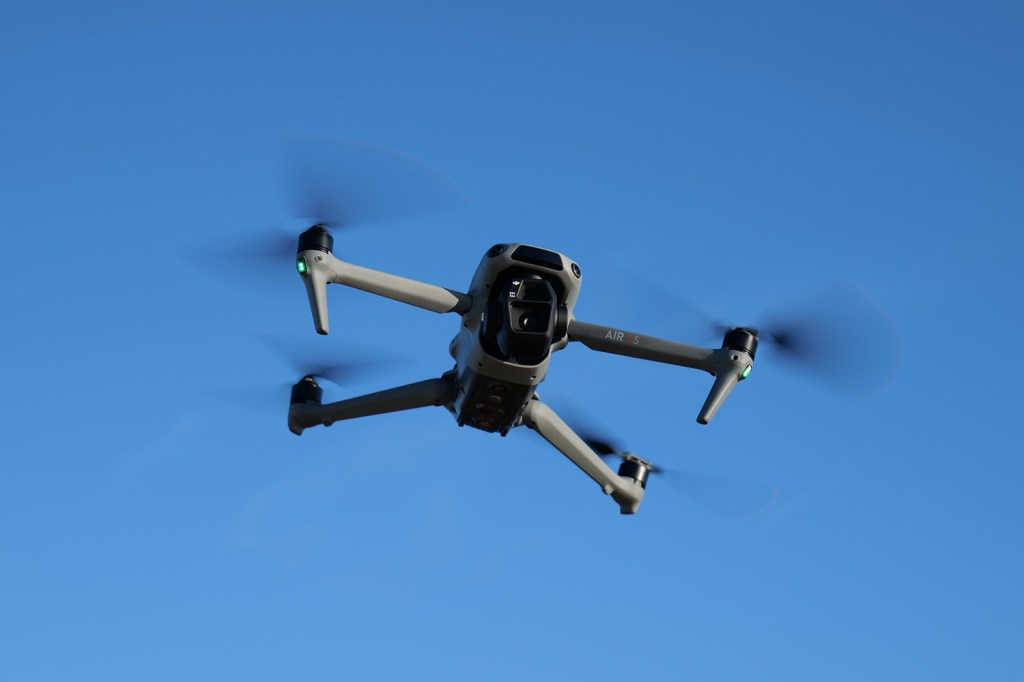
The Air 3 was a safe flyer, equipped with an omnidirectional vision-based sensor array that would prevent it from colliding with trees, walls, lampposts and other obstacles. This has been upgraded slightly for the Air 3S, with the front-facing portion of the array now using powerful LiDAR technology. This boosts obstacle-dodging capabilities at night-time, although only to the front, of course – the rest of the sensors remain vision-based and therefore far less effective after the sun goes down.
Due to the aforementioned restrictions around flying the Air 3S, I wasn’t able to test this low light avoidance tech to the extent that I would have liked. That being said, every time I flew the drone, I noticed that the direction and proximity of potential obstacles were being indicated on the controller’s screen. So it’s clear the detection works, but I would like to see how it fares when paired with the autopilot modes such as ActiveTrack 360º, which will follow and film a moving subject with the camera while performing various moves and navigating around detected obstacles.
In the ways I was able to test for myself, I found flight to be completely painless. The Air 3S resists wind very well (it’ll hover in place in winds up to about 30mph, in fact), reacts swiftly to control inputs and comes with the usual quality-of-life features like automatic take-off and return-to-home. It also features the same excellent O4 transmission technology as the Air 3, which means excellent control range (up to 10km in theory) and a clear, low-latency 1080p/60fps live stream beamed from the drone’s camera to the controller screen.
Battery life is very solid indeed. The drone can fly for up to 45 minutes on a fully charged battery according to DJI and, while in reality the figure will be slightly less, it’s still an impressive amount of time to be in the air.
Camera performance: twice as nice
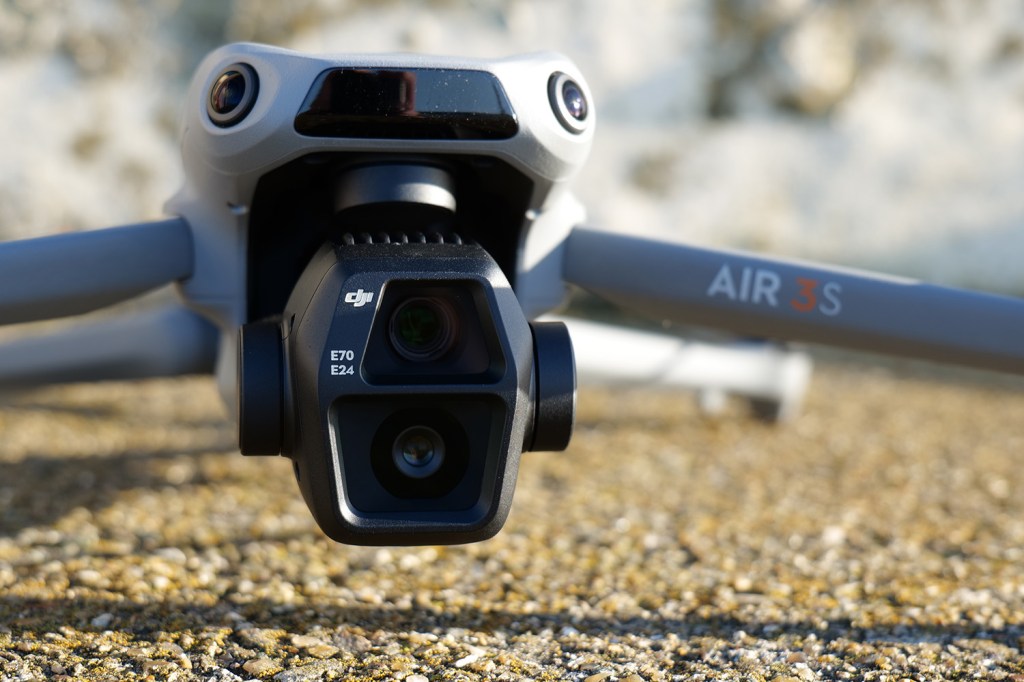
As mentioned, DJI has made some improvements to the Air 3’s dual camera setup here. But only slightly. The Air 3 used two 1/1.3in 48MP CMOS sensors; the Air 3S upgrades the wide-angle camera’s sensor to a 50MP 1in CMOS. The medium tele sensor remains the same. There may be some other very minor tweaks to imaging, but the headline improvement is that the wide-angle camera is now better in low light and capable of capturing more dynamic range than it was on the Air 3.
The 70mm equivalent telephoto camera makes a great foil for the 24mm equivalent wide-angle camera, even if it hasn’t been improved much over its predecessor. Having a tele lens means I was able to compress perspective in photos and especially video to create a more dramatic look to a shot, or to simply get ‘closer’ to a far-off subject without having to move the drone physically nearer.
One thing that I found disappointing was the fact that both cameras still have fixed apertures. This limits the user’s power to adjust shutter speeds and means that fitting ND filters is almost a must in bright sunlight – at least for users who want full control over the look of their footage.
The Air 3S’s image quality is excellent for the drone’s price and size. You can record footage in 4K at up to 60fps (or 120fps in slow-motion mode), using 8-bit and 10-bit standard colour profiles or 10-bit HLG and 10-bit D-Log M profiles. I used the latter for the sample shots you see here, grading and correcting the footage in DaVinci Resolve Studio to maximise dynamic range. As you can see, the drone performs very well in twilight conditions, with low noise and clean colours, particularly with the wide-angle camera.



Photos can be taken at 12MP or 48/50MP and shot in JPEG or DNG RAW format. The sample shots you see here were shot in RAW and processed using Adobe Lightroom.
DJI Air 3S verdict
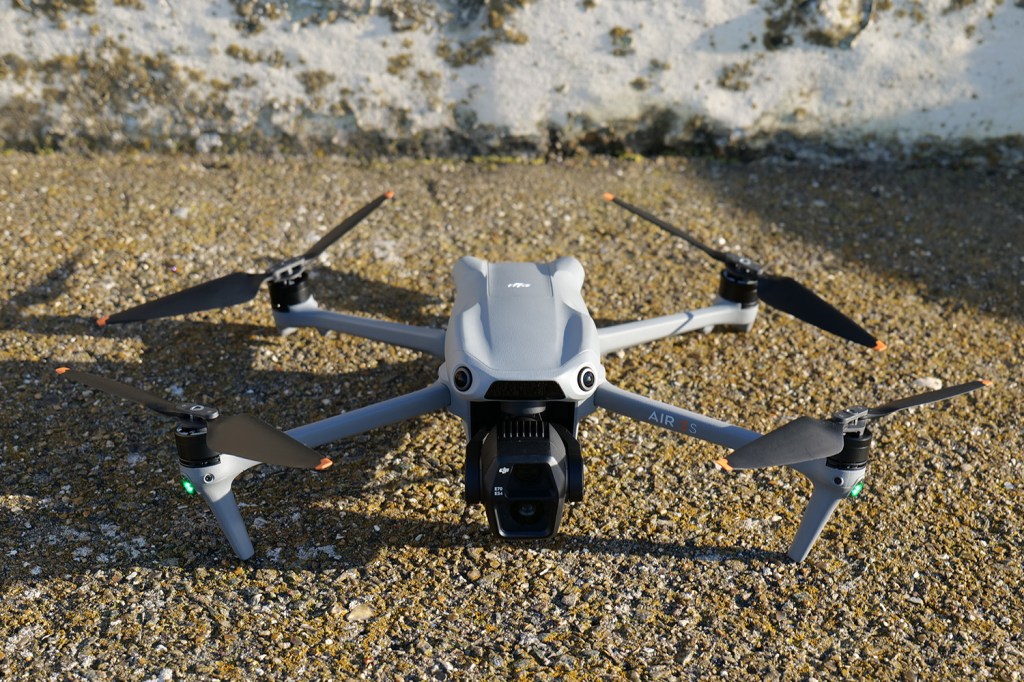
Much as I loved reviewing the Air 3S and capturing images with its cameras, it’s a difficult drone to recommend for UK-based consumers. That’s not DJI’s fault at all, but down to the CAA. The body’s rules about where it can and can’t be flown just seem overly restrictive (even for pilots with an A2 CofC) to the point where, if you don’t live near the sea or have access to a tract of private land, there seems little point in owning one. A sub-250g model from the DJI Mini range just makes a lot more sense.
For those based elsewhere or willing to put up with extra paperwork, cost and limitations of ownership, it’s a fantastic buy for the money. It builds on the dual-camera capabilities of the Air 3 (not the point where Air 3 owners need to upgrade, mind you) and delivers excellent aerial video and photo quality while being easy to fly and carry.
Stuff Says…
Not a great choice for UK residents due to its weight, and probably not worth swapping your Air 3 for – but the Air 3S is yet another fantastic, great value camera drone from DJI.
Pros
Excellent dual-camera setup
Great safety features
Good battery life
Cons
Bad stuff 1
Bad stuff 2
DJI Air 3S technical specifications
| Flight time | 45 minutes |
| Cameras | 1 x 50MP wide-angle, 1 x 48MP medium tele |
| Video quality | 4K/60p (120p in slow motion) |
| Connectivity | 42GB internal plus microSD card slot |
| Dimensions | 214x101x89mm (folded), 724g |

